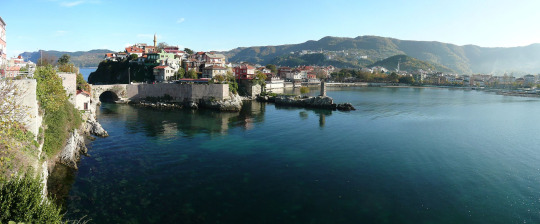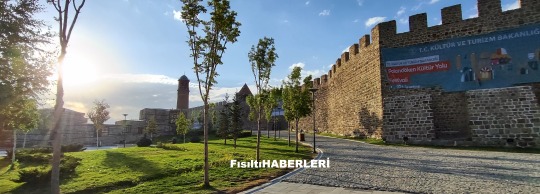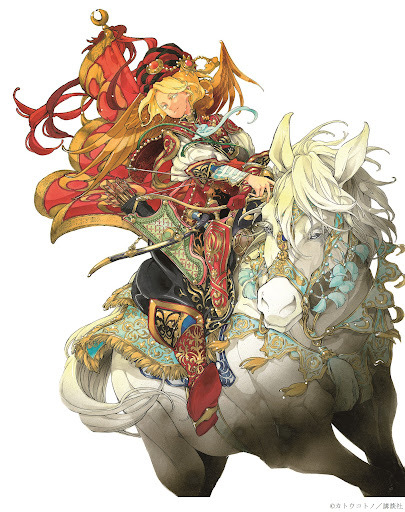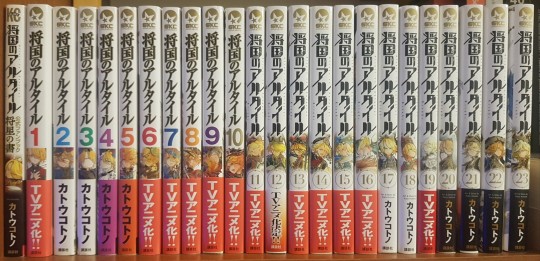#Sultan Mahmut II
Explore tagged Tumblr posts
Text

Türk Polis Teşkilâtımızın Polis Haftası Kutlu Olsun.
Polis Haftası (6 Nisan -12 Nisan )
Huzur ve güvenliğimiz için görev yapan,Türk Polis Teşkilatımızın ,Kuruluş yılını kutluyor,görev başında şehit düşen polislerimizi rahmetle yâd ediyor , gazilerimizi minnet ve şükranla anıyorum.
1845 tarihi, Türk Emniyet Teşkilâtı açısından önemli bir tarihtir. Çünkü bu tarihe kadar "zabıta" olarak nitelenen teşkilât 10 Nisan 1845'den itibaren "polis" adı altında hayata geçmiş ve Emniyet Teşkilatının kuruluş günü olarak kabul edilmiştir.
Türk Polis Teşkilatı Padişah Abdülmecid zamanında 10 Nisan 1845'te kurulmuştur. II. Mahmut döneminde kapatılan Yeniçeri Ocağı'ndan sonra iç güvenliği yürüten kuvvetler birden fazla kişiye bağlı ve düzensiz bir şekildeydi.
II. Mahmut'un başlattığı ıslahatların bir devamı olarak da, Sultan Abdülmecid 10 Nisan 1845'te Polis Teşkilatını kurmuş ve bu teşkilatın görevleri yine aynı gün yürürlüğe giren Polis Nizamnamesinde belirtilmiştir.
20 notes
·
View notes
Text
Unification of Anatolia ( 01/03/78 - 04/04 /78 )

After the collapse of the Seljuk Sultanate of Rum in the second half of the middle century, many small Turkic kingdoms emerged. until finally the Turkiye Stratocracy stood and dominated the Anatolian plains. The surviving beyliks were Karaman (one of the beyliks that had great influence in Anatolia as well as Turkiye's sworn enemy at that time), Isfandirids on the northern shore of the Black Sea, and Dulkadir in Cilicia which at that time became a vassal state of the Mamluk sultanate.

Anatolian States during years 78 of Turkiye Calendar.
Zaganos Pasha wanted to unify all the small kingdoms that were still divided. with the ambition of establishing a large Turkiye Stratocracy. To secure his military operations, on the 14th of the month of Tencere, 78 of the Turkiye calendar, Zaganos dispatched Tughril Mahmut Pasha to the Mamluk Sultanate to strengthen political, trade relations and forge military alliances. through the relationship between the two countries Zaganos Pasha succeeded in obtaining the legality of the official stamp of the Abbasid Caliph, Al - Muttawakil II, so that the Turkiye Stratocracy has a strong influence in the Islamic world. thus, the zaganos pasha could freely carry out his military operations in Anatolia without having to deal with the Cairo Government. and cut off the beyliks' only attempt to ally with the Mamluks in the face of threats from the Zaganos Pasha's forces.

Tomb of Sayf Ad-din Inal during reign 76 - 84 Turkiye Calendar.

Mamlukes Sultanate.
At the beginning of the month of Raki, Zaganos Pasha started his military operations in Anatolia, bringing with him 80,000 Troops, and 250 ships, under the command of Yakup Pasha, and Kasim Pasha ( Governor of Balta ). His first target in this operation was the city of Amasra which was under the Genoese colony. This city was the trading center of the Genoese in the Black Sea region. but because the majority of people in this city were merchants, and did not care about who ruled their city as long as it did not disturb their property and honor, they agreed to open the city's gate. Zaganos Pasha managed to conquer it without war.

Panoramic view of the town.
on the other hand, knowing the movements of the Zaganos troops, Kemâleddin Ismâil Bey the ruler of Isfandirid fled to Sinope, the capital of his government. Though relieved by Amasra's downfall, learns that Zaganos' military operations are not going towards his country. but he remained vigilant by preparing war fleets, standby troops, and cannons. it is known that Sinope's army numbered 12,000 soldiers, who were reinforced with 400 cannon. The Isfandirids, in this case, were the first to adopt Cannon technology, before the Turkiye Stratocracy. they are said to also have a strong navy.
to prevent bloodshed among his soldiers, Zaganos Pasha tried to trick Ismail Bey. he sent Ishaq Pasha as his emissary to Sinope, informing Ismail Bey that the Turkiye military operations were directed at the Trebizond, not the Isfandirids, to prevent misunderstandings between the two sides. Ishaq Pasha succeeded in convincing Ismail that the Turkiye military operation would not threaten the sovereignty of his country. he was greatly relieved by it. in order to satisfy the zaganos, Ismail agreed to help by sending 6000 of his best troops under the command of his son, Kızıl Ahmed Bey. to assist the Turkiye campaign to conquer trebizond.

Isfandirids Beyliks Flag
At the same time, Zaganos Pasha decided to change his route from the shores of the Black Sea, towards Ankara, this was done so that Ismail bey would appear to be sure that the Turkiye troop movements were indeed directed towards Trebizond. as said by Ishaq Pasha. not long after, came Ishaq Pasha with an entourage of 6000 Isfandirids troops led by ahmet bey in Ankara. but immediately, zaganos pasha ordered his janissaries to arrest the party. (including Ahmet Bey). Zaganos Pasha apparently wanted to take them hostage, to threaten Ismail into surrendering his city, as well as reduce the number of isfandirids soldiers defending the city of Sinope.
11 days later, on the 12th, Zaganos arrived in front of the city gates of Sinope, giving Ismail Bey an ultimatum to surrender. On the other hand, the Turkish fleet had laid siege to the port of Sinope at an inopportune moment. because their fleet was not prepared beforehand. in an emergency like this, it was impossible for Ismail to put up a fight, he immediately surrendered and gave his city to Zaganos. thus, the Isfandirids region merged into the Turkiye Stratocracy. in return for surrendering their city, Zaganos bestowed the titles of Pasha Kemâleddin Ismâil, and Kızıl Ahmed. Ismail was given command over the towns of Inegol, Yenisehir and Yarhisar. while his son, Ahmet, is the governor of Bolu City.

view of Sinope city
Zaganos Pasha managed to conquer Amasra and Sinope without losing a single troop. his final target this time was the Trebizond Empire. The background to the founding of this empire was formed from the fall of Constantinople by the Latin Crusaders about 250 years ago. divided Byzantium into small kingdoms in Sud and Anatolia. a member of the Byzantine family, Alexios Komnenos fled to this city which later established this empire for generations.
This city was battered by the Seljuk Rum sultanate, led by Ghiyatsuddin and Allaudin Kaykubat. despite defeating its army, the Sultanate was unable to conquer the city and could only enforce the annual tribute that was paid to maintain its sovereignty. Trebizond also frequently entered into defensive alliances with the neighboring Turkomans, by marriage. like Ak koyunlu. Emperor David Komnenos married his daughter Despina Hatun to Uzun Hassan, ruler of Ak Koyunlu.
in order to break the alliance between Ak Koyunlu and Trebizond, Zaganos Pasha decided to move towards Sivas. then encamped at Erzincan, which became a border town between Turkiye and Ak Koyunlu. Zaganos wanted to make sure Ak Koyunlu wouldn't become a stabbing dagger when he launched his military operations against Trebizond. Uzun Hassan thought that the Turkiye military operation was directed at him, became very frightened. he decided to negotiate with Zaganos by sending his delegation accompanied by his mother, Sara Hatun to Erzincan.Zaganos Pasha respected her so much that he called her Mother ( ana ). an agreement was agreed upon in which clause, Ak koyunlu promised not to militarily assist Trebizond when Turkiye besieged the city. thus, Zaganos succeeded in severing the ties of the Trebizond Ak Koyunlu defensive alliance. but as a guarantee that Uzun Hassan kept his promise to the end, he decided to keep Sara Hatun's delegation and sent a letter to Uzun, that he promised to release the delegation after the conquest of the city of trebizond was completed.

Ak Koyunlu States
Zaganos Pasha divided his army on its way to trebizond into two directions. he himself moved with his 40,000 troops from the direction of Erzincan, while another 40,000 troops under the command of Hizir Pasha moved from the shores of the black sea. Naval troops under the command of Kasim Pasha and Yakup Pasha move across the Black Sea. their troops first arrived at trebizond port on the 16th. by landing 30,000 troops accompanied by 2 ballista cannons. 2 days later, Hizir Pasha's army arrived at trebizond by west. the zaganos troops arrived too late, due to the steep terrain, and dense trees that prevented troop mobilization.
the siege of Trebizond lasted 34 consecutive days. Turkiye troops continued to bombard the city walls with cannons, causing serious damage to the fortifications. but the Turkiye troops had yet to launch a general attack. David Komnenos realized that his city would not be able to withstand the siege any longer. he sent his delegation, Amiroutsez to reason with the zaganos, that Trebizond would be willing to pay the annual tribute, even marry the emperor's daughter, Hanna Hatun. however Zaganos rejected all of the offers. he only asked Trebizond to surrender voluntarily.

wall fortifications in Trebizond.
on the 4th, the month of Seker, as a result of successive shelling from the Turkiye cannons, some of the city walls began to crumble and opened many gaps. David Komnenos decided to immediately surrender to Zaganos. the surrender of Trebizond ended the reign of the komnenos dynasty that ruled the city for 261 years. Zaganos Pasha entered the city in triumph, then converted one of the churches there ( Chrysokephalos ) into a mosque. and according to what was agreed, Zaganos Pasha released Delegation Sara Hatun while giving gifts in the form of souvenirs and abundant possessions to Sara Hatun, as well as gifts to Uzun Hassan. after the conquest of Trebizond, Zaganos Pasha decided to marry Emperor David's daughter, Anna Hatun whom he had turned down in her offers during the siege. in exchange for guaranteeing security for members of his family dynasty. according to Tursun beg, Zaganos pasha celebrated his wedding with the pashas and soldiers at Trebizond for 3 days, while inviting his new wife to have their honeymoon together.

Fatih Mosque in Trebizond. used to be a church named Panagia Chrysokephalos.
#shoukoku no altair#altair record of battles#kotono kato#kato kotono#fanfic#zehir zaganos#fan fiction#ottoman#Altair;Era Of Crusades
5 notes
·
View notes
Photo

Historical Practices in Treasury Management
The tradition of sealing Treasury doors was believed to have persisted until the time of Sultan Murat II.
Importance of Treasury Register Books
During Sultan Mehmet IV’s reign, significant emphasis was placed on Treasury register books. This focus stemmed from a notable incident following the death of Superintendent of the Treasury, Mermer Mehmet Pasha, who had been promoted to the Kubbealti vizierate. A substantial quantity of jewels and valuable goods belonging to the Treasury were discovered among his possessions.
Rise of Heritage Seizing
The practice of seizing heritage became more common from 1679 A.D., eventually becoming a primary source of income for the Imperial Treasury. However, Sultan Mahmut II later abolished this practice Private Istanbul Tours.
Distinction Between Heritage and Confiscation
While both heritage seizure and confiscation contributed to the Treasury’s income, they differed in nature. Heritage seizure involved acquiring the property of individuals who died naturally, whereas confiscation targeted the assets of individuals like Vizier Hasan, who had been executed.
Contributions from Foreign Envoys
During Sultan Mehmet IV’s reign, gifts from foreign envoys significantly enriched the Treasury. For instance, the French envoy presented ninety purses of jewelry and thirty purses of assorted gifts, while the envoy from the Tsar in Moscow arrived with one thousand one hundred ninety-eight sable furs and various other items.
Tradition of Gifting to the Treasury
Gifts presented to the Sultan by the Valide Sultan (queen mother), the Grand Vizier, and other high-ranking officials as tokens of congratulations were also directed to the Imperial Treasury, continuing a longstanding tradition within the empire.
1 note
·
View note
Photo

Historical Practices in Treasury Management
The tradition of sealing Treasury doors was believed to have persisted until the time of Sultan Murat II.
Importance of Treasury Register Books
During Sultan Mehmet IV’s reign, significant emphasis was placed on Treasury register books. This focus stemmed from a notable incident following the death of Superintendent of the Treasury, Mermer Mehmet Pasha, who had been promoted to the Kubbealti vizierate. A substantial quantity of jewels and valuable goods belonging to the Treasury were discovered among his possessions.
Rise of Heritage Seizing
The practice of seizing heritage became more common from 1679 A.D., eventually becoming a primary source of income for the Imperial Treasury. However, Sultan Mahmut II later abolished this practice Private Istanbul Tours.
Distinction Between Heritage and Confiscation
While both heritage seizure and confiscation contributed to the Treasury’s income, they differed in nature. Heritage seizure involved acquiring the property of individuals who died naturally, whereas confiscation targeted the assets of individuals like Vizier Hasan, who had been executed.
Contributions from Foreign Envoys
During Sultan Mehmet IV’s reign, gifts from foreign envoys significantly enriched the Treasury. For instance, the French envoy presented ninety purses of jewelry and thirty purses of assorted gifts, while the envoy from the Tsar in Moscow arrived with one thousand one hundred ninety-eight sable furs and various other items.
Tradition of Gifting to the Treasury
Gifts presented to the Sultan by the Valide Sultan (queen mother), the Grand Vizier, and other high-ranking officials as tokens of congratulations were also directed to the Imperial Treasury, continuing a longstanding tradition within the empire.
0 notes
Photo

Historical Practices in Treasury Management
The tradition of sealing Treasury doors was believed to have persisted until the time of Sultan Murat II.
Importance of Treasury Register Books
During Sultan Mehmet IV’s reign, significant emphasis was placed on Treasury register books. This focus stemmed from a notable incident following the death of Superintendent of the Treasury, Mermer Mehmet Pasha, who had been promoted to the Kubbealti vizierate. A substantial quantity of jewels and valuable goods belonging to the Treasury were discovered among his possessions.
Rise of Heritage Seizing
The practice of seizing heritage became more common from 1679 A.D., eventually becoming a primary source of income for the Imperial Treasury. However, Sultan Mahmut II later abolished this practice Private Istanbul Tours.
Distinction Between Heritage and Confiscation
While both heritage seizure and confiscation contributed to the Treasury’s income, they differed in nature. Heritage seizure involved acquiring the property of individuals who died naturally, whereas confiscation targeted the assets of individuals like Vizier Hasan, who had been executed.
Contributions from Foreign Envoys
During Sultan Mehmet IV’s reign, gifts from foreign envoys significantly enriched the Treasury. For instance, the French envoy presented ninety purses of jewelry and thirty purses of assorted gifts, while the envoy from the Tsar in Moscow arrived with one thousand one hundred ninety-eight sable furs and various other items.
Tradition of Gifting to the Treasury
Gifts presented to the Sultan by the Valide Sultan (queen mother), the Grand Vizier, and other high-ranking officials as tokens of congratulations were also directed to the Imperial Treasury, continuing a longstanding tradition within the empire.
0 notes
Photo

Historical Practices in Treasury Management
The tradition of sealing Treasury doors was believed to have persisted until the time of Sultan Murat II.
Importance of Treasury Register Books
During Sultan Mehmet IV’s reign, significant emphasis was placed on Treasury register books. This focus stemmed from a notable incident following the death of Superintendent of the Treasury, Mermer Mehmet Pasha, who had been promoted to the Kubbealti vizierate. A substantial quantity of jewels and valuable goods belonging to the Treasury were discovered among his possessions.
Rise of Heritage Seizing
The practice of seizing heritage became more common from 1679 A.D., eventually becoming a primary source of income for the Imperial Treasury. However, Sultan Mahmut II later abolished this practice Private Istanbul Tours.
Distinction Between Heritage and Confiscation
While both heritage seizure and confiscation contributed to the Treasury’s income, they differed in nature. Heritage seizure involved acquiring the property of individuals who died naturally, whereas confiscation targeted the assets of individuals like Vizier Hasan, who had been executed.
Contributions from Foreign Envoys
During Sultan Mehmet IV’s reign, gifts from foreign envoys significantly enriched the Treasury. For instance, the French envoy presented ninety purses of jewelry and thirty purses of assorted gifts, while the envoy from the Tsar in Moscow arrived with one thousand one hundred ninety-eight sable furs and various other items.
Tradition of Gifting to the Treasury
Gifts presented to the Sultan by the Valide Sultan (queen mother), the Grand Vizier, and other high-ranking officials as tokens of congratulations were also directed to the Imperial Treasury, continuing a longstanding tradition within the empire.
0 notes
Photo

Historical Practices in Treasury Management
The tradition of sealing Treasury doors was believed to have persisted until the time of Sultan Murat II.
Importance of Treasury Register Books
During Sultan Mehmet IV’s reign, significant emphasis was placed on Treasury register books. This focus stemmed from a notable incident following the death of Superintendent of the Treasury, Mermer Mehmet Pasha, who had been promoted to the Kubbealti vizierate. A substantial quantity of jewels and valuable goods belonging to the Treasury were discovered among his possessions.
Rise of Heritage Seizing
The practice of seizing heritage became more common from 1679 A.D., eventually becoming a primary source of income for the Imperial Treasury. However, Sultan Mahmut II later abolished this practice Private Istanbul Tours.
Distinction Between Heritage and Confiscation
While both heritage seizure and confiscation contributed to the Treasury’s income, they differed in nature. Heritage seizure involved acquiring the property of individuals who died naturally, whereas confiscation targeted the assets of individuals like Vizier Hasan, who had been executed.
Contributions from Foreign Envoys
During Sultan Mehmet IV’s reign, gifts from foreign envoys significantly enriched the Treasury. For instance, the French envoy presented ninety purses of jewelry and thirty purses of assorted gifts, while the envoy from the Tsar in Moscow arrived with one thousand one hundred ninety-eight sable furs and various other items.
Tradition of Gifting to the Treasury
Gifts presented to the Sultan by the Valide Sultan (queen mother), the Grand Vizier, and other high-ranking officials as tokens of congratulations were also directed to the Imperial Treasury, continuing a longstanding tradition within the empire.
0 notes
Photo

Historical Practices in Treasury Management
The tradition of sealing Treasury doors was believed to have persisted until the time of Sultan Murat II.
Importance of Treasury Register Books
During Sultan Mehmet IV’s reign, significant emphasis was placed on Treasury register books. This focus stemmed from a notable incident following the death of Superintendent of the Treasury, Mermer Mehmet Pasha, who had been promoted to the Kubbealti vizierate. A substantial quantity of jewels and valuable goods belonging to the Treasury were discovered among his possessions.
Rise of Heritage Seizing
The practice of seizing heritage became more common from 1679 A.D., eventually becoming a primary source of income for the Imperial Treasury. However, Sultan Mahmut II later abolished this practice Private Istanbul Tours.
Distinction Between Heritage and Confiscation
While both heritage seizure and confiscation contributed to the Treasury’s income, they differed in nature. Heritage seizure involved acquiring the property of individuals who died naturally, whereas confiscation targeted the assets of individuals like Vizier Hasan, who had been executed.
Contributions from Foreign Envoys
During Sultan Mehmet IV’s reign, gifts from foreign envoys significantly enriched the Treasury. For instance, the French envoy presented ninety purses of jewelry and thirty purses of assorted gifts, while the envoy from the Tsar in Moscow arrived with one thousand one hundred ninety-eight sable furs and various other items.
Tradition of Gifting to the Treasury
Gifts presented to the Sultan by the Valide Sultan (queen mother), the Grand Vizier, and other high-ranking officials as tokens of congratulations were also directed to the Imperial Treasury, continuing a longstanding tradition within the empire.
0 notes
Text

Fısıltı Haberleri F.Muhabiri Ömer PALABIYIK Erzurum Kalesi'ni Ziyaret Etti Erzurum Kalesi - Erzurum Erzurum'un merkezinde Yakutiye ilcesinde Camiikebir Mahallesinde yer almaktadır. Erzurum'un merkezinden yaya olarak rahatça ulaşım sağlanmaktadır. Otobüs terminalinden ve Tren garından ulaşım araçlarınla rahatlıkla ulaşılmaktadır. Kale her gün ziyarete açıktır , giriş ücretlidir. Erzurum kalesinin cevresindeki geçmişi MÖ. 4000 yıllara kadar gittiği bilinmektedir. Erzurum kalesinin ilk inşa tarihi kesin olarak bilinmemektedir. Tarih boyunca Erzurum bölgesine Hattiler, Hititler, Hurriler, Urartular, Kimmerler, Saka (İskit) Türkleri, Medler, Persler, Makedonyalı İskender, Selevkoslar, Partlar, Romalılar, Sasaniler, Araplar, Gürcüler, Saltuklular, Selçuklular, Moğollar, İlhanlılar, Karakoyunlular, Timurlular, Akkoyunlular, Safeviler ve Osmanlılar hâkim olmuştur.
Erzurum Kalesi, bulunduğu tepenin üzerinde dış kale ve iç kale olmak üzeri iki kısımdan oluşmaktaydı. Kalenin dış duvarları günümüze ulaşamamıştır. Günümüze ulaşan iç kale , MS. 415 yılında Bizans İmparatoru Theodosius inşa ettirmiştir. İç kalenin duvar kalınlıkları 2-2.5 m. arasında değişmekte olup, günümüzde sekiz burcu ayaktadır. Erzurum Kalesinde Saltukoğulları dönemine ait Kale Mescidi ve Tepsi Minare bulunmaktadır. Tuğladan bir hamam ve oda halinde mekânlar yer almaktadır.
Osmanlı İmparatorluğu döneminde kalenin kuzey duvarı bitişiğinde İç Kale Mescidi yapılmıştır. Kırklar Türbesi, Ebu İshak-ı Kâzerûnî Türbesi ve Ali Ağa Çeşmesi de ilave edilmiştir.
Erzurum Kalesinin dış surlarında , Tebriz Kapısı, Erzincan Kapısı, Gürcü Kapısı ,İstanbul Kapısı ve Yeni Kapı olarak dört yöne açılan kapıların isimleri bilinmektedir.
Erzurum Kalesi 16. yy'da Kanuni Sultan Süleyman ve 19. yy'da II. Mahmut dönemlerinde onarılmıştır. https://www.fisiltihaberleri.com/haber/fisilti-haberleri-fmuhabiri-omer-palabiyik-erzurum-kalesini-ziyaret-etti-9265.html
#FısıltıHABERLERİ #Fısıltı #Erzurum #ErzurumKalesi #Konuni #SultanSüleyman #Geziyorum #Gezi #Ziyaret #ÖmerPalabıyık #Haber #Magazin #Gündem #Medya #Theodosius
0 notes
Photo




Couples kissing in period dramas- Part 2
1. Anna Petrovna Hatun + Mahmud II- Kalbimin Sultani
2. Elizabeth of York + Henry VII- The White Princess
3. Mary, Queen of Scots + Francis II- Reign
4. Sehzade Mustafa + Efsun Hatun- Muhtesem Yuzyil
#kalbimin sultani#sultan of my heart#the white princess#twp#Reign#CW Reign#muhtesem yuzyil#magnificent century#Anna Petrovna#anna hatun#Anna Petrovna Hatun#Mahmud II#sultan mahmut ii#elizabeth of york#henry vii#henry vii of england#Mary Queen Of Scots#mary stuart#Francis II#sehzade mustafa#efsun hatun#Adelaide Kane#jodie comer#adelaine kane#toby regbo#mehmet günsür#melisa sözen#jacob collins levy#ali ersan duru#aleksandra nikiforova
42 notes
·
View notes
Text
La venganza del sultán: el trágico fin de los jenízaros.
La venganza del sultán: el trágico fin de los jenízaros.
Cuerpo de guerreros de élite, los jenízaros dominaron la política del Imperio otomano, hasta que en 1826 Mahmut II desencadenó una brutal purga que terminó con su aniquilación. Jenízaros durante la revuelta griega de 1821Los pretorianos del sultánAdemás de una fuerza temible para sus enemigos, los jenízaros eran la guardia personal del sultán y tuvieron mucho poder dentro de las fronteras…

View On WordPress
0 notes
Photo

Historical Practices in Treasury Management
The tradition of sealing Treasury doors was believed to have persisted until the time of Sultan Murat II.
Importance of Treasury Register Books
During Sultan Mehmet IV’s reign, significant emphasis was placed on Treasury register books. This focus stemmed from a notable incident following the death of Superintendent of the Treasury, Mermer Mehmet Pasha, who had been promoted to the Kubbealti vizierate. A substantial quantity of jewels and valuable goods belonging to the Treasury were discovered among his possessions.
Rise of Heritage Seizing
The practice of seizing heritage became more common from 1679 A.D., eventually becoming a primary source of income for the Imperial Treasury. However, Sultan Mahmut II later abolished this practice Private Istanbul Tours.
Distinction Between Heritage and Confiscation
While both heritage seizure and confiscation contributed to the Treasury’s income, they differed in nature. Heritage seizure involved acquiring the property of individuals who died naturally, whereas confiscation targeted the assets of individuals like Vizier Hasan, who had been executed.
Contributions from Foreign Envoys
During Sultan Mehmet IV’s reign, gifts from foreign envoys significantly enriched the Treasury. For instance, the French envoy presented ninety purses of jewelry and thirty purses of assorted gifts, while the envoy from the Tsar in Moscow arrived with one thousand one hundred ninety-eight sable furs and various other items.
Tradition of Gifting to the Treasury
Gifts presented to the Sultan by the Valide Sultan (queen mother), the Grand Vizier, and other high-ranking officials as tokens of congratulations were also directed to the Imperial Treasury, continuing a longstanding tradition within the empire.
0 notes
Text
AHMAK !
Anonimliğini gizleyemediği için lütfen paylaşmadan cevap ver diyen Kardeşim kusura bakma ama başlıktaki yazıda çok haklıyım.
Osmanlıda Halkın 10/7 'si cahildi diyor.
Çok uzağa gitme. Sen Sultan II. Mahmut Han zamanında takibinin bizzat Sultan tarafından yapıldığı Her Çocuğun İş hayatına atılmadan önce dini ve dünyevi bir takım bilgi ve terbiyeyi almadan ve her nahiyenin bağlı olduğu kadı ve kethüdaya giderek, tahsilatını tamamlamıştır yazılı ve mühürlü evrakı olmadan işe başlayamayacağı ile alakalı fermanlar yayınlandığını biliyormusun ? Bu Cumhuriyet döneminin Seksenlere kadar anca toparlayanildiği ilk ve orta öğretim Diplomasıdır. Çocuğun hem fikri hem bedeni gelişimini tamamlamadan iş hayatına atılmasını önlemek hem de Vicdanlı, düşünen ve bilen bir nesil yetiştirlmek için gayret gösterilmişti. Arşiv ve resmi kayıtlarda da mevcuttur. Araştırabilirsin.
Zaten şunu kavrayamayan bir insan bu milleti ecdadını anlayamaz. Senin ciltler solusu kitaplar yazan alimlerin dahi kendini cahil ve fakir olarak kabul ederdi. Sadece işin içinden çıkamadığında değil adı gibi bildiği şeylerde dahi Vallahü A'lem (Allah daha iyi bilir) diyen bir milletin evlatları nesilleriyiz biz. Buna göre hepimiz Cahiliz zaten. Ama en büyük başarı Bu çağda dahi bu derece Cahil kalmak, gerçekten ayakta alkışlanacak meziyet vesselam!
22 notes
·
View notes
Text
Which MC/MCK Character Belongs To Heaven? A Tier List
(All celestial realms only have three circles because I am lazy. Haven’t seen season 2 of Kösem in full, so I didn’t dare to judge. Also, this is about actual morality, quality as a character, as well as about how much I like them.)
Heaven 1st circle (second only to Jesus in God’s eyes): Cihangir, Gülnihal, Leo, Bülbül aga 2nd circle (mistakes were made, but overall we’ve canonized worse people): Anastasia!Kösem, Afife, Daye, Gül aga, Matrakçi, Sadika, Gölge, Sayeşte, Hüsrev pasha 3rd circle (heaven is half-empty anyway, I guess you’ll do): Bayezit (MC), Isabella Fortuna, Armin, Beyhan, Isabella Fortuna, Şeker aga, sultan Ahmet, Mehmet Giray, Mihrünissa, sultan Mustafa, Zülfikar
Purgatory 1st circle (a few months and like one forgiven murder from heaven at most): Hatice, Ayas pasha, Ayşe (MC, season 1), Cevher, Ebu Suud, Efsun, Firuze, Lokman aga, Nigar kalfa, Sümbül, Cennet, Derviş pasha, Handan, sultan Osman 2nd circle (your sins don’t outnumber the times you made this show infinitely better by your mere presence): Hürrem, Mahidevran, Fatma sultan, Mercan, Nurbanu, Şah, Fahriye sultan, Gabriella de Sfeo 3rd circle (I hereby sentence you for being a boring bitch): şehzade Mustafa, Aybige, Dudu, Elif, Esma, Fidan, Helena, Nurbahar, Nazli, Nilüfer, Atmaca, Halil pasha (MCK, s1), Iskender, Yavuz, Zümrüt aga, Fahriye kalfa, Rümeysa, Ayşe (MC season 3), Hadim Süleyman
Limbo (Who? I mean, those I don’t remember well enough): Alvise Gritti, Defne, Iskender pasha, Pedro, Anne of Poland, Gazanfer, Canfeda, Gracia Mendes, Kara Ahmet pasha, Lala Mustafa pasha, Piri pasha, Sinan pasha, Sokollu Mustafa, shah Tamhasp
Hell 1st circle (Satan has a super rad party here and guess what, you’re invited): Fatma (MC, seasons 2&3), Gülşah (see, it’s hell cause they are here together), Rüstem pasha, Safiye, Dilruba, Halime, Davut pasha, Menekşe, Şahin Giray 2nd circle (your only sin is being annoying but boy have you sinned): Mihrimah, s1!Kösem, Esmahan, Huricihan, Nazenin, Taşlicali Yahya, Ahmet pasha (MC, season 1), Haci Mustafa, Hümaşah (MCK), Katerina (MCK), Kiraz aga, Mahfiruz, Mahfiruze, şehzade Mehmet (both) 3rd circle (Fuck you. Just fuck you.): Ayşe Hafsa, Gülfem, Bali Bey, Barbarossa, Louis II. of Hungary (the character, not the historical king whom they absolutely butchered, asjgh...), Meleki, Kuyucu Murat, Zal Mahmut
Superhell (for all of your gay crimes: Ibrahim pasha, Süleyman, Lütfi pasha (he’s not gay, but he is probably homophobic, so this is a double superhell for him), Reyhan aga
24 notes
·
View notes
Text
But are you reading Shoukoku no Altair?
As the nerd who spends way too much time while translating Yume no Shizuku, Kin no Torikago, I wanted to make a post on my first "Ottoman" manga: Shoukoku no Altair.


Left: A real-life Mahmut (Ottoman Sultan, Mahmut II). Right: Japanese Mahmut. I know that Altair has nothing to with his time period, but I can't help but think about Mahmut II everytime I hear the name "Mahmut". He's such a boss. So in my mind, a Mahmut can never be as bishounen as Tughril Mahmut.
I first saw that manga in the dark corners of LiveJournal years ago, at a time when there weren't even scanlations. And I LOVED the art. But back then, due to the lack of scans and because I couldn't even read the Japanese title, I forgot about it for years. Yes, I do have a very bad memory.
Fast forward to 2017, Shoukoku no Altair got an anime adaptation. And when was I going to start reading this Ottoman-inspired manga if not now? Like I did with DoD, I expected it to be an orientalist trainwreck. But little did I know that Katou Kotono had a degree in history and the more I got into Altair, the more I would be crying about how ignorant I was. I quickly caught up with the story. And boy, did I love it! (The anime adaptation doesn't do this manga justice. And I'm still mad that they skipped an entire sea battle.)

Published SnA volumes, minus the latest vol. 24, and the fanbook. Japan should bring SAL back already, I want to be able to buy my mangos without developing shipping strategies.
Warning for DoD fans, this is a full shounen manga. There is no shoujo romance to see here (I'm still mad at the editors for forcing that dancer girl in the story in the earlier volumes because a shounen manga had to have a female love interest. I'm glad we didn't get to see her again and if anything, not-Vlad the Impaler's cute daughter would make a better waifu for a pasha like Mahmut). It's about the wars between the not-Ottomans and the not-Holy Roman Empire, complete with some Italian city-state drama. It only has battles, politics and keikakus. Huge armies maneuver in battle, alliances are made and broken, heads fly, armies clash, cities are besieged, we peek at the logistics behind huge armies, and civil war and coup d'états can happen any moment! If you are in DoD for politics, I'm sure you will love Altair because it actually delivers in that department.

My little pasha can't be this smug. Vol. 20, and vol. 9's cover from the Milkazzar Altair art book (2014). Those volume covers have me screaming.
Unlike DoD, Altair is not a fully historical manga, so it's not based on real events nor there's a set time frame for it. But looking at the story elements, we can say that it's set somewhere around the second half of the 15th century. So it's somewhat close to DoD's time frame if we squeeze hard enough. I also think Burak Paşa, the "sultan" in Altair, kind of resembles to an old Suleiman I.
Every little detail in Altair is just chef's kiss! Katou-sensei has a vast knowledge of military tactics and uses it in every chapter of Altair. And huge kudos to Sense Scans and their translator, murakumo, who did a perfect job. Turkish written in kana hurts my brain, and I always check their scans before going "naruhodo!". Go check their Altair blog, it's awesome and has lots of info on the manga and you can find pretty manga artwork there. And after thanking them, go buy the manga in a language you can read, it's very likely licensed in yours.
Now my little inner fangirl will speak: Altair has the finest men and boys. You can't find this many bishounen even in 70s shoujo manga. Even if you don't care about all those battle tactics, you might care about all the bishies! Anyway have this very soft Bayezid to prove my point <3

Can you believe that this is the face of a murderer?
Let me also talk about the art in Shoukoku no Altair: It's gorgeous! That's all I can say. I legit spend minutes looking at the outfits and the accesories. Katou herself said that she was inspired by Turkish jewelry and created Altair. Check this Mahmut swag out:

Vol. 3's cover, scanned from the 2017 art book. I wish I knew how to process my images so that I could do sensei justice.
Shoukoku no Altair is licensed in English by Kodansha, and they are almost up-to-date with Japanese releases. Honestly the best timeline for reading Altair. Go read Altair while waiting for new DoD chapters.
67 notes
·
View notes
Photo


"In earlier times, central places where Turks conducted their religion-based cultural activities in Rhodes were Süleymaniye mosque and Hafız Ahmet Ağa Library. The library was found in 1793 by Hafız Ahmet Ağa, who was born in Rhodes, educated in the imperial court and was entrusted with prominent position by Sultan Selim III; whereas the Ottomans had to wait until the reign of Mahmut II and the year 1829 to see the opening of a similar library in Cyprus. Starting from the Tanzimat edict, official state yearbook called Ottoman State Almanac started to be printed in state printeries. The first almanac was printed in Rhodes in 1874. When Rhodes became Mediterranean Islands Pronvincial Center in 1887, some other almanacs were also printed in the island. We can more easily followe the presence of Ottoman Turkish cultural and literal works printed in the Aegean sea as of 1880's as well." Source: The Forgotten Turkish Identity of the Aegean Islands, Mustafa Kaymakçı & Cihan Özgün, p. 150-151
#turk#turkish#turkey#ottoman#rhodes#dodecanese#the dodecanese#rodos#greece#aegean#ege denizi#kütüphane#library#asia#culture#history#islamic#balkan#rumeli#12islands
4 notes
·
View notes